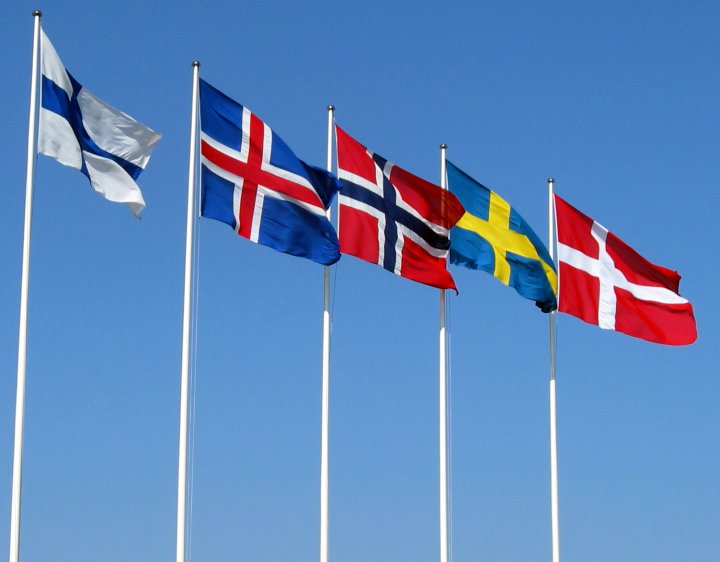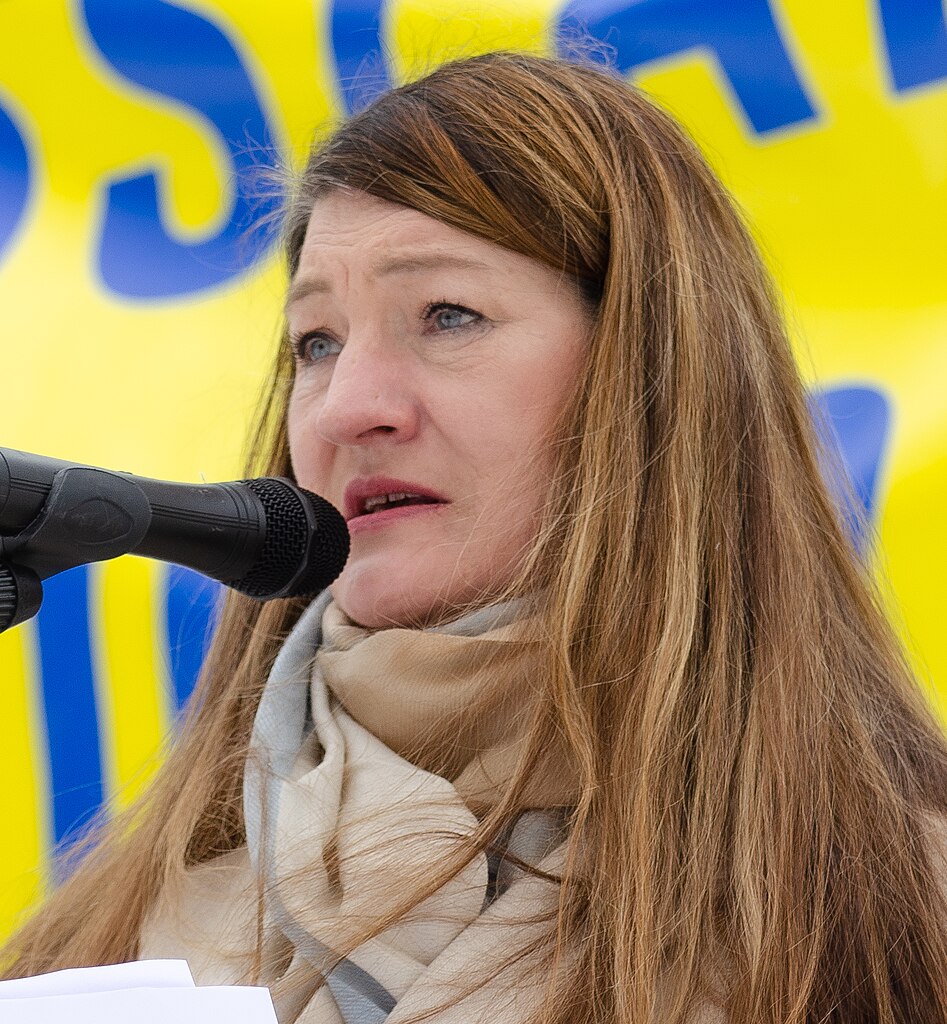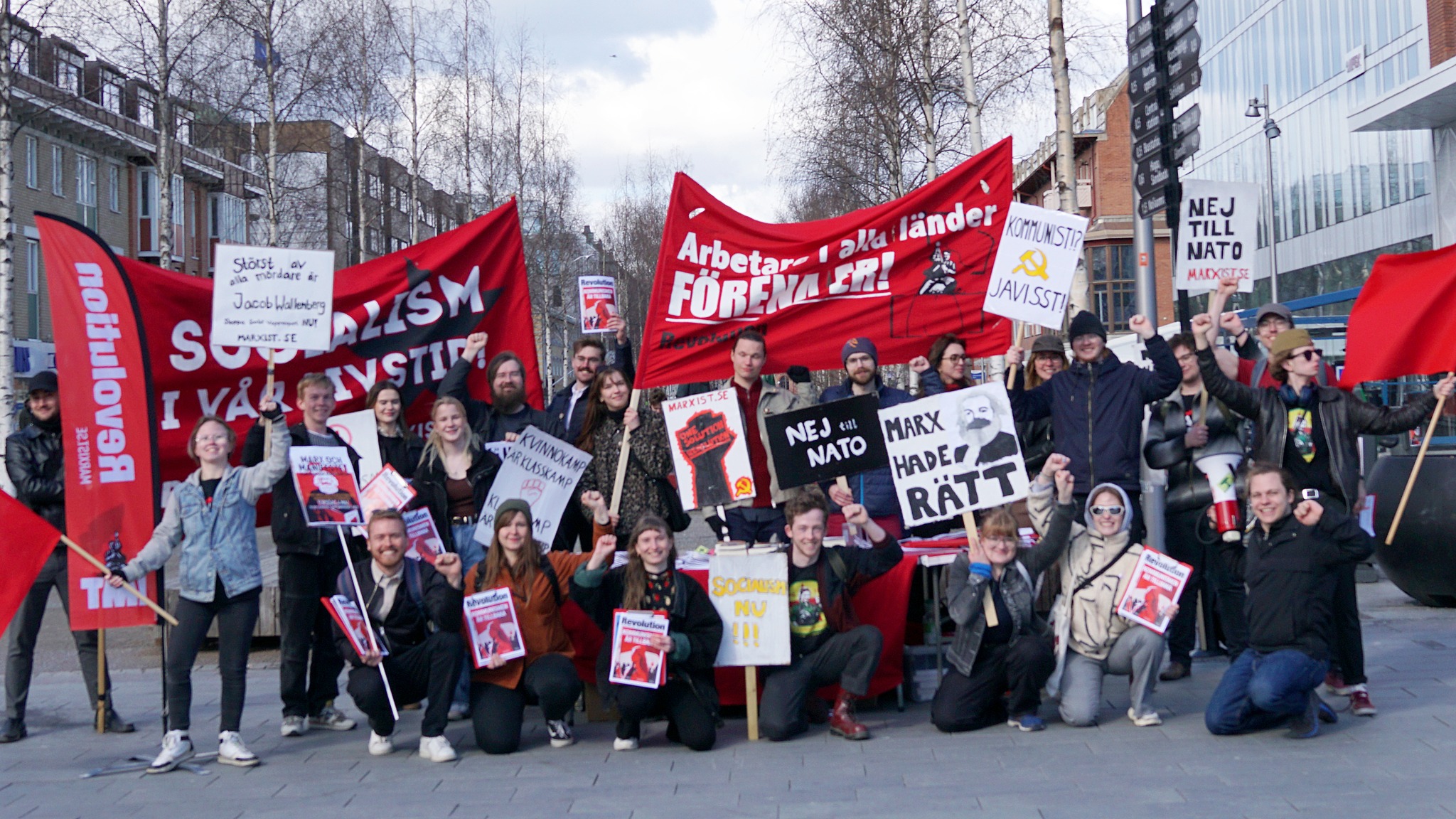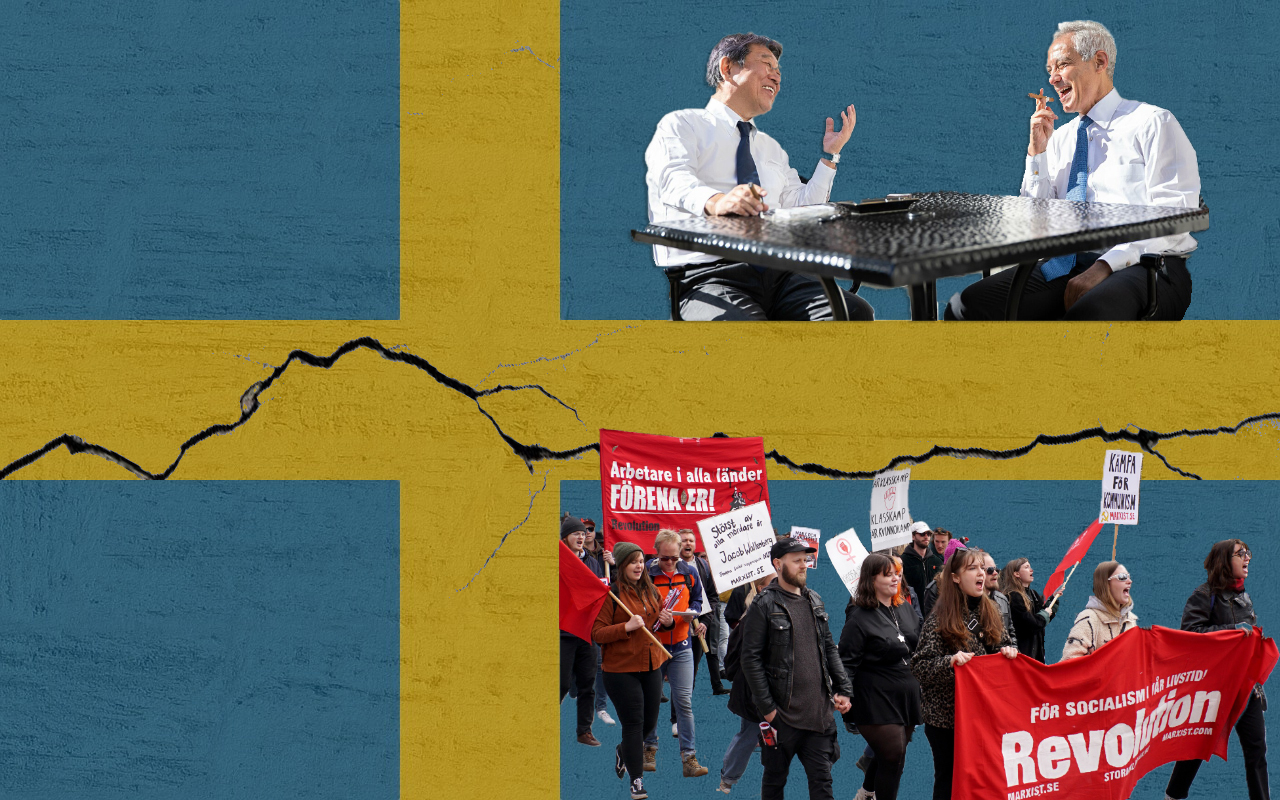Sweden is often presented as a model of class collaboration, stability and a robust welfare state. The truth is that it is one of the most unequal countries in the world. Decades of cuts and privatisations has led to massive discontent, aggravated by one of the highest falls in living standards in Europe in the past two years.
Sweden has, like the rest of Scandinavia, often been hailed by reformists around the world as proof that you can reform capitalism: that it is possible to have a large welfare state and a somewhat equal distribution of wealth without abolishing capitalism. Neither straight up capitalism, nor communism, but a wonderful third option that is possible even without class struggle, but instead can be attained through pleasant negotiations between the bosses and the labour movement.
Bernie Sanders even coined the phrase “Scandinavian Socialism”, and promoted this fantasy as his model for the US.
Of course, socialism has never existed in Scandinavia. Even during the postwar period, when there certainly was large-scale state ownership, when welfare was expanded and many reforms introduced, capitalism was never abolished.
The reformist labour movement led by the Social Democrats and the trade unions, always made sure never to go too far in challenging the rule of the capitalists. The reforms carried out in this period, like in the rest of the advanced capitalist countries, were possible due to the massive economic upswing which allowed for higher wages and reforms that did not threaten the growing profits of the capitalists.
Sweden in particular came out of the Second World War in a strong position. Having not participated in the war, its industry was intact. Sweden’s economy therefore blossomed and the capitalists – wary of the close proximity to the Soviet Union and the powerful Swedish labour movement – consented to many reforms, often under the mere threat of class struggle.
In a situation with a quickly expanding market, with high demand for labour, some of these reforms were also in the interest of the Swedish bourgeoisie. The extended welfare state freed women from many household chores through child and elder care and paid maternity leave, unlocking a larger labour force that the capitalists needed. Labour immigration was also encouraged in this period for the same reason.
This has long passed into memory however. In 1980, Sweden was one of the most equal countries in the world. But with the counter-reforms coming out of the economic crisis in the 1970’s and especially the early 1990’s, all those gains of the working class began being rolled back.
Many of the cuts and counter-reforms took place under a Social Democratic government, sometimes supported by the Left Party. The trade unions made sure to hold back wage demands as they “were worried about the low profitability of the industry”, to quote an admission made in a documentary.
 Socialism has never existed in Scandinavia / Image: Hansjorn, Wikimedia Commons
Socialism has never existed in Scandinavia / Image: Hansjorn, Wikimedia Commons
This has carried on to this day. In 1997, the trade unions established a model called “the mark”, whereby the industrial trade union, IF Metall, is always first to negotiate a deal with the bosses. No other blue collar trade unions may then demand higher wages than those contained in that agreement. The argument being that if they did, they might inspire industrial workers to demand higher wages as well, and the net result could lower the ‘competitiveness’ of Swedish industry (i.e. profits of the capitalists).
The real truth of what reformists hail as a third road, is the same old story of how reformists, having been convinced that you cannot (or should not) abolish capitalism, take it upon themselves to manage capitalism in the interests of the capitalists. The class collaboration that was supposed to work favourably for both workers and capitalists, transforms into a weapon whereby the leaders of the Labour movement become gatekeepers of the working class: doing their utmost to stop workers from struggling for better conditions.
Sweden today: a haven for capitalist looting
All this has resulted in a massive increase in class divisions. In 1980, a CEO would earn, on average, nine times more than an industrial worker. In 2021, they earned almost 70 times more. In 1996, Sweden had 28 billionaires. Today that number is 542. Together, they control 68 percent of GDP: thirty times more than in 1996.
As we have previously explained, the Social Democrats and the right-wing parties have taken turns to lower taxes for the rich, and to scrap taxes on inheritance, gifts, real estate and capital. The property tax level is lower in Sweden today than in both Britain and the US.
Where the state used to have almost total control over education and healthcare, now a large part is run by publicly-funded private companies, through which the capitalists make off with a good chunk of taxpayer money. Today, 78 percent of students in primary and high schools attend schools run by private companies, not including those run by non-profit organisations.
The massive relief packages during all big economic crises, and the tax cuts and funding of private companies, have made it necessary for the ruling class to make swingeing cuts to welfare. The number of hospital beds has more than halved since the 1990’s, and is now the lowest per 1,000 inhabitants of all the OECD countries. This spelled disaster when the pandemic hit Sweden in 2020. In the first eight months of 2020, Swedish nurses worked almost 2.2 million hours of overtime, and the working conditions established then have more or less remained the same since.
A crisis waiting to happen
But even though there were cuts, counter-reforms and privatisations, the economy was at least booming and real wages steadily increased after the crisis of the 1990’s. Sweden recovered quickly from the crisis in 2008, with a massive injection of credit into the economy and low interest rates allowing capitalism to expand temporarily beyond its limits.
In the years 2015 to 2019, interest rates were even negative, and the Central Bank indulged in a feverish quantitative easing policy in an attempt to prop up sluggish growth. This allowed many to buy homes and feel as though their standard of living was increasing.
But this was nothing but a giant bubble waiting to burst. And with rising inflation and rising interest rates, all the signs are that this bubble will burst soon.
Private debt is now at 200 percent of annual income, up from 90 percent in 1996. Total debts (private and public) stand at 313 percent of GDP, surpassing the US, Italy, Britain and Spain. Despite the Central Bank’s effort to stave off inflation, raising interest rate to 3.75 percent, Consumer Price Inflation has since October 2022 remained higher in Sweden than in the UK, US and Germany.
And as foreign investors can see the danger posed by the Swedish real estate crisis, the Swedish currency is performing worse by the day, meaning more expensive imports and imported inflation. The Krona fell 15 percent to the Dollar and 9 percent to the Euro in 2022 and reached an all time-low in June this year.
And the worst is yet to come.
Over half of the mortgages are expiring within the coming year. With the bank's heavy exposure to the real estate sector, many things are now pointing towards a major banking crisis.
The first tremors appeared when the stock of the real estate company SBB – which has made a hack out of buying up public buildings and renting them back to councils – collapsed. Since January, it has fallen 85 percent and the company is now on the verge of bankruptcy. Many other real estate companies are at risk of the same fate.
At the same time, the measures taken against inflation have already hit the rest of the economy. Swedish GDP fell 2.4 percent in the second quarter and Swedbank is projecting a fall of 1.1 percent this year. The number of companies going bankrupt is the highest it has been in ten years. In July, they increased 86 percent in comparison with July last year.
As James McMorrow, Europe commercial property economist at Capital Economics, put it in a Financial Times article: “The closer we look at Sweden the worse things seem to appear”.
And though the state debt is low, this only means that the state is ready to jump in and foot the bill of a major crisis. As the FT explains “As for the clean public balance sheets, these can easily become dirty ones once automatic stabilisers and bailouts of all sorts start to kick in among a rapid and severe economic downturn.”
A deep crisis would then be followed by the same pattern as previously: massive cuts and attacks against the working class, coming on top of all the previous decades of cuts and hitting living standards already diminished by inflation.
Where are the trade unions?
 The General Secretary of the Trade Union Confederation explained how wage increases would not just lead to workers getting poorer, but they might also lose their jobs / Image: Frankie Fouganthin, Wikimedia Commons
The General Secretary of the Trade Union Confederation explained how wage increases would not just lead to workers getting poorer, but they might also lose their jobs / Image: Frankie Fouganthin, Wikimedia Commons
By the end of 2022, real wages had already fallen by 9 percent in just one year. Poverty was fast increasing. Matmissionen, a food store chain that offers subsidised food for the poor, doubled its membership in just nine months.
Even middle-class families find it hard to get by. In one instance, an elderly couple became sick because they had had to lower the temperature of their homes to 12 degrees in winter. The woman was hospitalised. The couple had previously voted for the conservative government, and had illusions in the many promises made by the right-wing coalition of economic compensations for the high energy prices, and so they therefore wrote an open letter to the prime minister, begging him to help them:
“Dear Prime minister, see this as a cry for help! The situation is hard and our lives are falling apart. Please don’t allow us to go bankrupt, spare our health and our house.”
This is the reality facing workers and even middle-class families now. So where are the trade unions? Though many things could be said about the role of the trade union leadership in other countries, at least many of them have gone on strike.
In Sweden, the trade unions have instead made a sport out of avoiding strikes at all cost. There have never been as few strikes – going back to the early days of the labour movement – as there have been in the last decade.
But in the last year, the trade union leaders have taken their aversion to class struggle one step further. Feeling the discontent rising from below, they began a massive campaign against real wage increases in preparation for the collective bargaining in the spring.
Their whole argument was the same one repeated many times by bourgeois economists: that inflation is driven by wage increases, and therefore wage increases would also be bad for workers. These arguments were answered by Marx over 150 years ago in Value, Price and Profit. But none are so blind as those who refuse to see.
In one interview after another, Susanna Gideonsson, the General Secretary of the Trade Union Confederation, LO, explained how wage increases would not just lead to workers getting poorer, but they might also lose their jobs!
The paper of the public sector trade union, Kommunalarbetaren, published a series of pictures with the headline “Higher wages mean higher inflation”. The trade union, Unionen, on their part, paid for adverts on Facebook directed towards their own members with statements such as “XL-wage increases means more expensive clothes”, “To fish for higher wages means more expensive coffee”, and “Too fat wage increases means less butter”.
The prize however goes to LO’s paper, Arbetet, which created an online game where you could pretend to be a trade union wage negotiator. If, in the course of the game, you choose to go on strike for more than 5.5 percent (still a lot lower than inflation) your actions would cause economic collapse! And a sign would appear saying, “On the streets starving humans are staggering forwards wearing rags”.
In the end the trade unions signed an agreement with the bosses for a 4.1 percent wage increase in 2023 and 3.3 percent in 2024, without even an attempt at striking.
But the discontent beneath the surface is enormous. In the winter, the miners held big trade union meetings that demanded 10, 15 and 20 percent wage increases. There was a clear mood of anger and defiance among the workers.
As one young miner told us: “We are disappointed in the trade unions that do not take up the struggle for us workers but instead sound like the bosses… the workers are not responsible for this crisis. Why should we pay for something we have not caused?”
There are many other signs of brewing anger and discontent. In Stockholm we saw a three day wildcat strike among commuter train drivers in April, followed by protests outside the union headquarters after the union leaders postponed a planned strike. When the trade union then signed a rotten deal and cancelled the strike altogether, the workers again organised a protest to show their discontent. They were only able to sign that deal by removing those trade union officials involved in negotiations, as they had refused to sign it, and replacing them with the union’s General Secretary!
Teachers also held another round of demonstrations across the country in May against cuts, following years of big demonstrations by workers across healthcare. But this has clear limitations. As the trade unions refuse to organise strikes, the workers turn to street demonstrations for a while – only to see that it does not affect the politicians one bit.
In order to stop the workers from voting to go on strike, the Swedish trade unions simply removed the workers’ right to vote on the question during the post-war period. This means that it is up to the leaders to decide when to accept a collective bargaining agreement and when not to, putting a lot of power into their hands. The pressure from below therefore has to be that much greater than in other countries in order to get the trade unions to act.
Class struggle on the agenda
 The period today leaves no other way out than revolution / Image: Revolution
The period today leaves no other way out than revolution / Image: Revolution
But there is also another side to this. The heavy weight of the trade union bureaucracy has created a tradition of wildcat strikes. Throughout the 1970’s, there was one wildcat strike after another, reflecting the general radicalisation and forcing the trade unions to accept a more radical programme, at times even forcing the union leaders to call strikes or demand higher wages.
This is exactly what is on the agenda today.
The politicians, both of the right wing and the ‘lefts’ are trying their best to divert workers’ attention from the growing class polarisation by increased racist propaganda, attempting to divide them and turn them against each other. They have tried to use the Ukraine war to scare workers with the threat of a Russian invasion, to foster national unity against the external threat.
But no diversion tactic can make the economic crisis and the increasing class polarisation disappear.
The fact that both workers’ parties – the Social Democrats and the Left party – are moving rapidly towards the right, offering no way out, and that the trade unions are attempting to block all avenues for the class struggle – all this will only make the coming class struggle all the more uncontrollable for them.
Sweden is not exempt from the same process of crisis, polarisation, instability and class struggle as the rest of the world. The shocks of the pandemic, the war and inflation will only be compounded by new shocks. This will transform the consciousness of Swedish workers. The lingering illusions in reformism will be crushed under the hammer blow of these events.
Trotsky explains in The History of the Russian Revolution:
“People do not make revolution eagerly any more than they do war. There is this difference, however, that in war compulsion plays the decisive role, in revolution there is no compulsion except that of circumstances. A revolution takes place only when there is no other way out.”
The period today leaves no other way out than revolution. The crisis of capitalism leaves no room for a prolonged period of reforms like the post-war period. Instead, things will only get worse for the working class, as the bosses intend to make the workers pay for the crisis. This will inevitably lead to class struggle and a deep questioning of the entire capitalist system: and revolution.
But the victory of that revolution is not at all guaranteed. It all comes down to if there are enough organised communists that have prepared for it and can show the way out, can lead that struggle to victory.
The reformist degeneration of the Swedish labour movement was due to the upswing of capitalism in the period before the First World War. That fostered illusions in Social Democratic parties around Europe of the possibility of continuous improvements and a gradual transition to socialism.
But a role was also played by the low theoretical level of the Swedish Social Democracy, where even the most revolutionary elements never understood what a revolution really meant. Many had also simply not read a lot of Marx or Engels, as very little was translated in those early days.
In Per Anders Fogelström’s masterpiece Mina drömmars stad, a revolutionary worker spends his whole life looking for a pamphlet that he had heard about by some Germans. He never ends up finding it. That text is, of course, The Communist Manifesto. This low political level made the Social Democrats easy prey to the pressures of capitalism.
Today, the Swedish communists are armed with the full arsenal of Marxist theory, and over the experience of one hundred years of class struggle and revolutions to draw upon. We are entering a period more favourable for world revolution than ever before, in which the working class has never been stronger.
The working class could easily take power from the capitalist class, if only they are provided with a real communist leadership.
Communists of Sweden: the revolution needs you for this task!
It’s time to get organised and fight for the downfall of this rotten system. Join the ranks of the International Marxist Tendency and the Swedish communists of Revolution. To become an organised revolutionary has never been more important.

